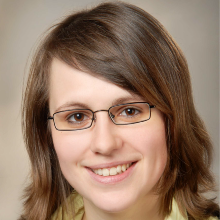We are pleased to announce that Maria Wetzel, doctoral researcher at the Helmholtz Center Potsdam - GFZ German Research Center for Geoscience, will give the next SFB 1313 "Pretty Porous Science Lecture". Her talk will be on "Hydraulic and mechanical effects of pore space alterations quantified by digital rock physics".
Date: Tuesday, 18 May 2021
Time: 4:00 pm CET
Speaker: Maria Wetzel, Helmholtz Center Potsdam - GFZ German Research Center for Geoscience
Lecture title: "Hydraulic and mechanical effects of pore space alterations quantified by digital rock physics"
Place: If you are interested in participating in the lecture, please contact katharina.heck@iws.uni-stuttgart.de
Abstract
The evolution of natural and engineered subsurface systems can be affected by pore-scale processes, which substantially alter the microstructure of rocks, and thereby change their hydraulic and mechanical behaviour at the macro scale. In order to improve the prediction of physical property changes resulting from pore-scale alterations of reservoir sandstones, a detailed representation of the rock microstructure, including its pore morphology and connectivity, is essential. For that purpose, three-dimensional pore-scale models of typical reservoir sandstones, obtained from highly resolved micro-computed tomography (micro-CT), are used to numerically calculate rock permeability and stiffness. In order to adequately depict characteristic distributions of secondary minerals, the virtual samples are systematically altered and resulting trends among the geometric, hydraulic, and mechanical rock properties are quantified. It is demonstrated that the geochemical reaction regime controls the location of mineral precipitation within the pore space, and thereby crucially affects permeability evolution, whereas the spatial mineral distribution has only limited impact on elastic rock properties.
In order to construct synthetic granular samples a process-based approach is proposed including grain deposition and diagenetic cementation. It is demonstrated that the generated samples reliably represent the microstructure of natural sandstones. Thereby, general limitations of imaging techniques can be overcome and various realisations of granular rocks flexibly produced. These can be further altered by virtual experiments, offering a fast and cost-effective way to examine the impact of precipitation, dissolution or fracturing on various petrophysical correlations. Predicting the resulting changes in rock permeability and stiffness is of paramount importance within the context of risk assessment for most applications related to geological subsurface utilisation: a permeability decrease has substantial consequences for reservoir productivity, while a reduction of mechanical parameters is of particular relevance to assess reservoir, caprock and fault integrity.



